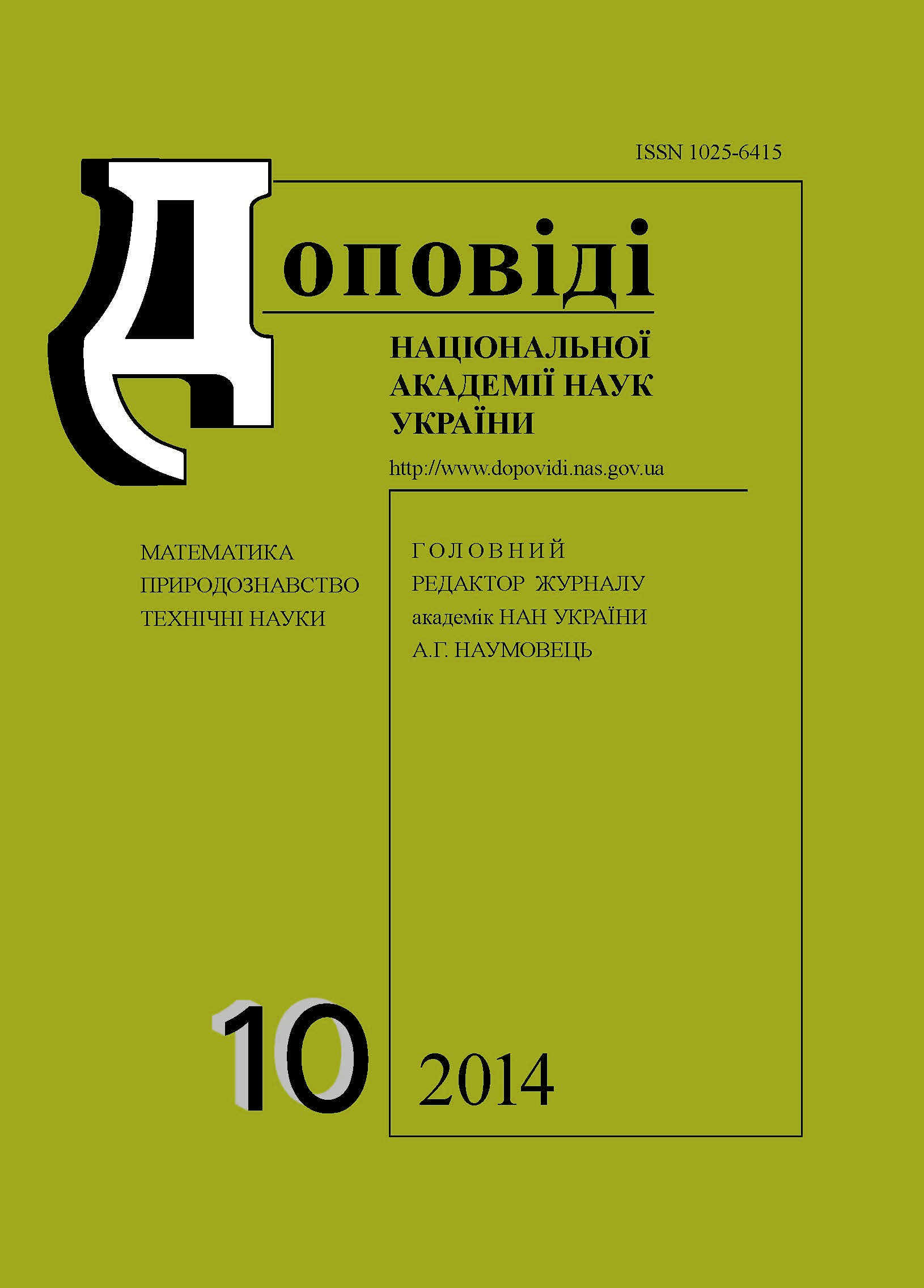Resistance of the micromycetes isolated from the chernozem usual and technozems to the joint influence of cadmium, nickel, copper, zinc, and lead
DOI:
https://doi.org/10.15407/dopovidi2014.10.144Keywords:
KeywordsAbstract
The resistance of micromycetes to the joint impact of cadmium, zinc, nickel, copper, and lead compounds is studied. The most sensitive to the minimum content of heavy metals (Cu2+ and Cd2+ — 2.25; Ni2+ — 3.0; Pb2+ — 15.0; Zn2+ — 17.5 mg/l) on the Capek medium were Absidia butleri, Mortierella vnacea, Cunninghamella echinulata, Curvularia tuberculata, and Fusarium solani. For Trichoderma longibrachiatum, Alternaria alternata, Penicillium sp4, and Mucor globosus, a weak growth even at the maximum concentration (Cu2+ and Cd2+ — 150; Ni2+ — 200; Pb2+ — 1000; Zn2+ — 1150 mg/l) was noticed. It is shown that Botrytis cinerea and Mortierella jenkini most actively accumulated cadmium, B. cinerea, Aspergillus wentii, M. jenkini, T. longibrachiatum — nickel, Aspergillus niger, Fusarium oxysporum, and Penicillium vinaceum — copper, M. jenkini — zinc. The majority of micromycetes had the smallest rates of zinc accumulation in comparison with other metals.
Downloads
References
Grishko V. M., Syschikov D. V., Piskova O. M. et al. Heavy metals entering the soil translocation in plants and ecological risk, Donetsk: Donbass, 2012 (in Russian).
Grishko V. N., Syschikova O. V. Pochvovedenie, 2009, No 2: 235–243 (in Russian).
Korinovska O. M., Grishko V. M. Biol. systemy. Nauk. visn. Chernivetsk. un-tu, 2012, 2 (4), Iss. 2: 176–179 (in Ukrainian).
Andriyuk K. I., Iutynska G. O., Antypchuk A. F. et al. The functioning of microbial communities in soil under anthropogenic stress, Kyiv: Oberegy, 2001 (in Russian).
Marfenina O. E. Anthropogenic ecology of soil fungi, Moscow: Meditsina dlia vsekh, 2005 (in Russian).
Milko A. A. Determinant mukoralnyh mushrooms, Kiev: Nauk. dumka, 1974 (in Russian).
Domsh K. H., Gams W., Andersen T. H. Compendium of soil fungi, Eching: IHW, 2007.
Zenova G. M., Stepanov A. L., Likhacheva A. A, Manichurova N. A. Practicum on biology of soils, Moscow: Izd-vo Mosk. un-ta, 2002 (in Russian).
Guidelines for determination of heavy metals in soils of agricultural and crop production, Central Institute of agrochemical service of agriculture, Moscow, 1989 (in Russian).
Terekhova V. A. Mikromitcety in the environmental assessment of aquatic and terrestrial ecosystems, Moscow: Nauka, 2007 (in Russian).
Zhdanova N. N., Vasylevska L. I. The melanin-containing fungi in extreme conditions, Kiev: Nauk. dumka, 1988 (in Russian).
Fokina A. I., Zlobin S. S., Domrachova L. I. et al. Vestn. Altai. gos. agrar. un-ta, 2012, No 2(88): 49–52 (in Russian).
Price M. S., Classen J. J., Payne G. A. J. Bioresour. Technol., 2001, 77: 41–49. https://doi.org/10.1016/S0960-8524(00)00135-8
Olishevska S. V., Vasylevska A. I., Fomina M. O. et al. Mikrobiol. zhurn., 2006, 68: 60–70 (in Ukrainian).
Ross I. S. Membrane transport processes and response to exposure to heavy metals. In: Stress tolerance of fungi (Ed. D. H. Jennings), London: Univ. of Liverpool, 1995: 97–125.
Downloads
Published
How to Cite
Issue
Section
License
Copyright (c) 2025 Reports of the National Academy of Sciences of Ukraine

This work is licensed under a Creative Commons Attribution-NonCommercial 4.0 International License.



